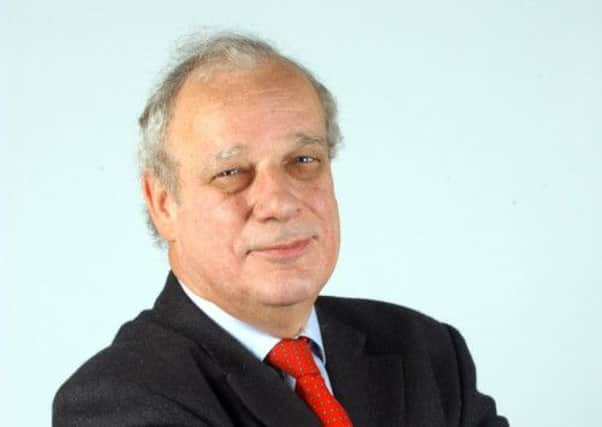Comment: Twin threats to mysterious recovery


Recovery has strengthened throughout the year – yet with no evident means of bank lending support. Indeed, bank lending to business remains depressed, and the hot business controversy of the past week has centred on allegations that RBS not only failed to hit its targets on lending to small- and medium-sized enterprises (SMEs) but actively drove companies into administration in order to sell off the assets.
And recovery has proceeded without arguably the biggest growth accelerator of them all – a healthy rise in business investment.
Advertisement
Hide AdAdvertisement
Hide AdAu contraire, the figures suggest. Investment has so far been extraordinarily weak in this recession/recovery cycle. According to Michael Saunders, chief UK economist at Citigroup, the level of investment in real terms in the second quarter of this year – the latest data available – was still 25 per cent below the 2007 peak. And as a share of nominal GDP, investment in recent quarters has been the lowest in recent decades and the lowest across the leading Group of Seven major industrial economies.
Weakness of investment probably reflects a mix of cyclical factors (e.g. sluggish demand and poor credit availability) and structural factors (low capital allowances and the shift to a more labour-intensive economy).
But that we have experienced recovery at all, particularly of this strength and breadth, is something of a mystery. The more pressing question now is how long it can be sustained without a substantial uplift in business investment and particularly in business lending by banks.
Latest figures are not encouraging. The Bank of England revealed last week that net lending to non-financial companies fell by a further £1.1 billion in October. Within this total, lending to SMEs was down by £505 million after declines of £383m in September, £642m in August and £855m in July.
So much for hopes that banks were becoming more prepared to lend to businesses with the improving economic situation and outlook. And as Global Insight economist Howard Archer points out, it also raises questions as to whether the extension to the Funding for Lending Scheme (FLS) in April to favour lending to SMEs has been of much use at all. Disappointment here may have been another factor in the Bank’s decision last week to focus the FLS scheme entirely on lending to businesses and to withdraw FLS support for mortgage lending from January.
The big debate over the past year has been whether this low level of bank lending reflects a deep reluctance on the part of banks to step up business lending after the credit binge debacle that plunged them into crisis, or whether businesses – and particularly small firms – were reluctant to apply for loans. Horrendous accounts of bank support being suddenly whisked away, of rates being raised and fees and charges slapped on have made many firms understandably wary of ever trusting a bank loan again.
Thus, in what still remained for much of this year a difficult trading environment, the priority for many firms has been to pay down their existing debt and build cash balances rather than make use of overdraft facilities. Larger companies have also opted to build cash reserves and to seek alternative methods of raising capital, either by equity issuance or flotation.
However, as the recovery has proceeded, business confidence has also risen, and there are now signs of a recovery in loan inquiries. A November survey from manufacturers’ organisation EEF indicated that the share of manufacturers with no need to borrow fell to 40 per cent, the lowest level since the survey began in 2007.
Advertisement
Hide AdAdvertisement
Hide AdSo, as demand for business lending increases, the issue of bank commitment to such lending could become acute. As if the controversies of recent years were not enough, the last thing the banks now want to face is a blazing row over policies seen to slow down or even prejudice the current recovery pace.
Recent weakness in investment should not, in Saunders’ view, stop the economy growing rapidly in 2014-15. Indeed, pent-up demand – especially in house building – should help support GDP growth. There are signs, he adds, that business investment will pick up in coming quarters. But given the importance of an investment recovery for the economy’s long-term growth, this week’s Autumn Statement is likely to include measures to help boost business investment through, for example, capital allowances and measures to improve SME finance.
Chancellor George Osborne has some room for manoeuvre at last. He will be able to announce simultaneously sharply higher forecasts for economic growth for this year and next compared with the estimates set out in the March budget. And he should also be able to project a much better than expected out-turn on the public finances, with the Public Sector Net Borrowing Requirement (excluding distortions) to come in at around £105bn in 2013-14 against £115bn previously – well below target. Moreover, with the estimate for growth in 2014 likely to be raised to 2.5 per cent, the budget deficit is likely to fall materially further in 2014-15.
Autumn Statement measures are expected to range from the introduction of a capital tax on the sale of foreign-owned homes in the UK, through changes in energy taxation (taking pressure off household bills) to measures to cut taxes and/or costs for small businesses.
One measure could be to reduce business rate relief for small companies which is currently due to expire in April. I expect the emphasis is likely to fall on “helping hand support for business” to help promote both a higher level of business investment and to encourage the banks to provide more support through business lending.
Without stimulus in these two critical areas there is a real risk of this “recovery with no visible means of support” running out of steam.
Twitter: @Bill_Jamieson